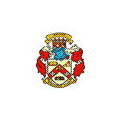Studies & Degrees in Astronomy
Choose where you would like to study Astronomy:
ArgentinaAustraliaAustriaBelgiumBrazilCanadaChileColombiaDenmarkEthiopiaFinlandFranceGermanyIndiaJapanLithuaniaMexicoNetherlandsNew ZealandPolandSaudi ArabiaSwedenThe United KingdomThe United StatesTurkeyAstronomy Study Programs
Taking the Astronomy Program is not equivalent to merely gazing at stars through telescopes, as the common notion is. Modern Astronomy actually as a science, complete with analytical and mathematical methods of studying celestial bodies in the universe. These celestial bodies include the planets, their moons or satellites, comets, meteors, stars, and galaxies both old and newborn, and the like.
Similar to other bodies of knowledge, Astronomy emerged from the trivial yet astonishing thing called curiosity. Ancient peoples were always in awe about the sun, the moon, the stars, and the unusual fiery rocks that fell from the sky on the odd occasion. Eventually, they observed how these heavenly bodies moved in an orderly, regular manner throughout a certain time interval. From these seemingly simple studies emerged what we now recognize as the calendar, the zodiac belt, and hence, the zodiac signs, and astrology, among other things. Ancient people believed that the planets influenced their fortune. Hence, as man progressed, this early belief likewise caused the growth of astronomy, as it encouraged the pursuit of better schemes to determine the truth of the principle. As time advanced, the methods grew more rigid, mathematical, varied, and scientific, eventually producing the sub-fields of modern Astronomy.
There are several inter-connected fields of study under the Astronomy Program, these include:
Astrometry involves the observational study of the position and motion of the celestial bodies. This branch of Astronomy is essential in determining universal time, or what is known as UTC (Coordinated Universal Time), which is actually relative to the earth’s rotation.
Closely linked to astrometry is the next branch – Celestial Mechanics. This study, as its name implies, likewise deals with the motion of celestial bodies. What actually sets celestial mechanics apart from astrometry is the fact that this branch focuses on orbits and, generally, the effect of gravity on celestial motion. Celestial mechanics uses the principles and quantities of Physics. Hence, this branch of Astronomy has direct applications in astrophysics.
Astrophysics is basically the study of the chemical composition and physical properties of the stars, planets, galaxies, and the like. From birth to end state, celestial objects are observed, in terms of the physical conditions and laws that dominate them, for their behavior to be understood.
Cosmology, on the other hand, is comparable to astrophysics but a slight difference lies in the range of study. This branch is macro-point of view in the study of the universe. Cosmology deals with the universe in its entirety, from its beginning to its future.
Taking the Astronomy Program means having an innate interest, or passion, not only for the stars and planets, but also for other sciences like Physics and Mathematics. Astronomers actually spend a lot of time reading, to keep up with the developments and findings of others in their field. They also have to learn how to deal with a lot of computers, where they merge science with technology, creating models and simulations.
Most graduates of the Astronomy Program move on to getting their doctoral degree. These further studies mostly involve research, writing proposals, and likewise publishing of papers. This is why a number of graduates are employed as faculty of various colleges and universities. Others choose to become involved with advanced research in observatories and institutions; others work alongside engineers and astronauts in space stations like the NASA (National Aeronautics and Space Administration).


